In chess, every move on the 64-square battlefield can have far-reaching consequences, setting the tone for the rest of the game. As Black, your opening moves are critical in establishing a solid foundation or, if chosen poorly, can lead to a precarious position from the outset.
In a previous article, we studied the worst moves in chess for white. In this post, we’ll focus on Black’s early moves. While there are countless opening variations to explore, we’ve compiled a list of the 10 worst opening moves for Black. Understanding these pitfalls are important for beginners hoping to avoid common errors, enhance their opening repertoire, and set the stage for a stronger middle game. Join us on this journey as we uncover the missteps that can spell disaster for Black in the opening phase of the game.
This post contains affiliate links. Please read our disclosure.
1. The Robatsch Defense
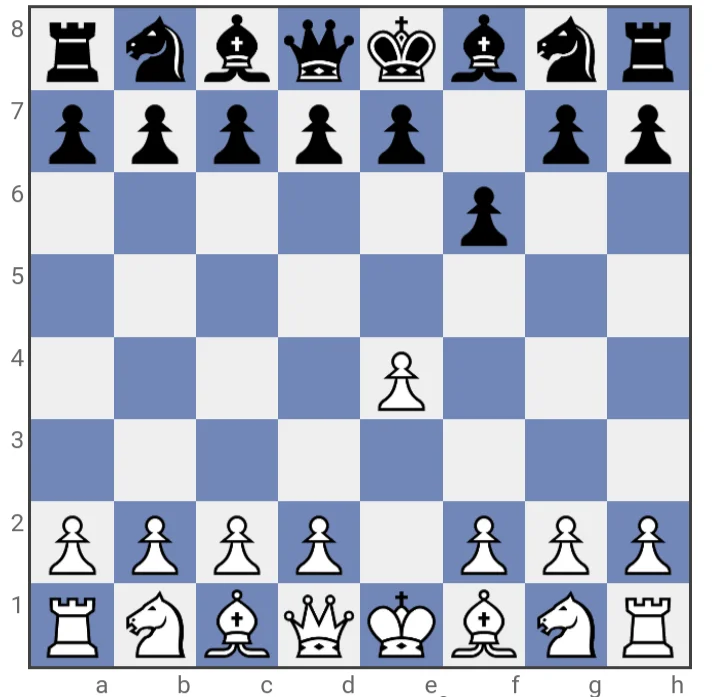
The Robatsch Defense, often referred to as the “Pirc Defense,” is characterized by the move 1…f6 for Black. While it may seem like a flexible move at first glance, it has its drawbacks. This pawn move weakens the kingside Pawn structure and can potentially lead to difficulties in ensuring the safety of the Black King and coordinating piece development.
2. The Stalemate Trap
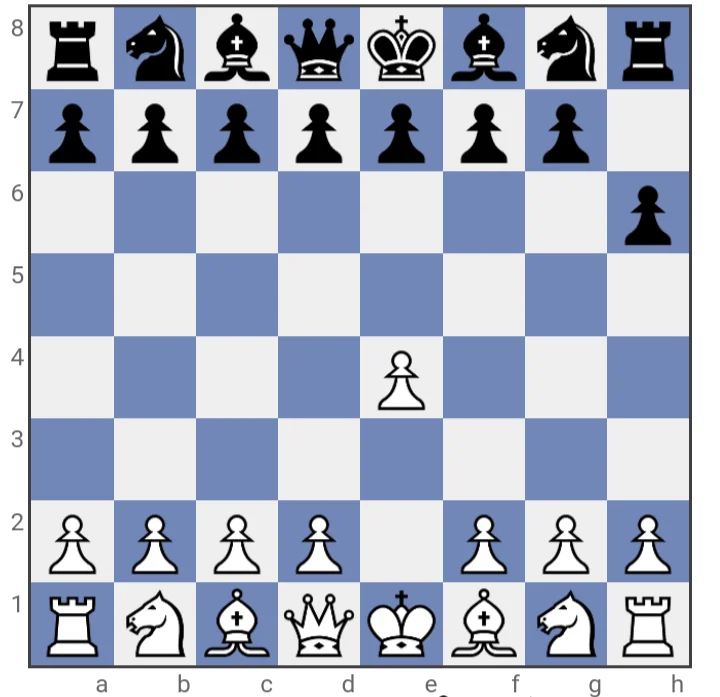
Another critical mistake for Black is 1…h6. While it may seem harmless, this move creates weaknesses around the King’s shelter, making it susceptible to potential threats like 2. g4, followed by a relentless kingside attack.
3. Undermining the Center
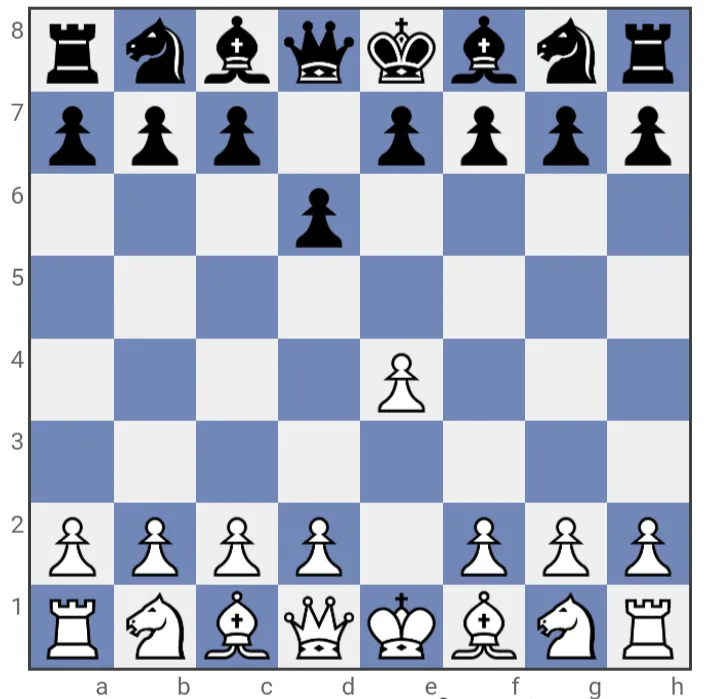
Playing 1…d6 might seem like a solid choice, but it allows White to occupy the center with pawns at 2. e4, gaining a strong position and control of the board. Black’s game may become passive and cramped early on.
4. Hesitating Development
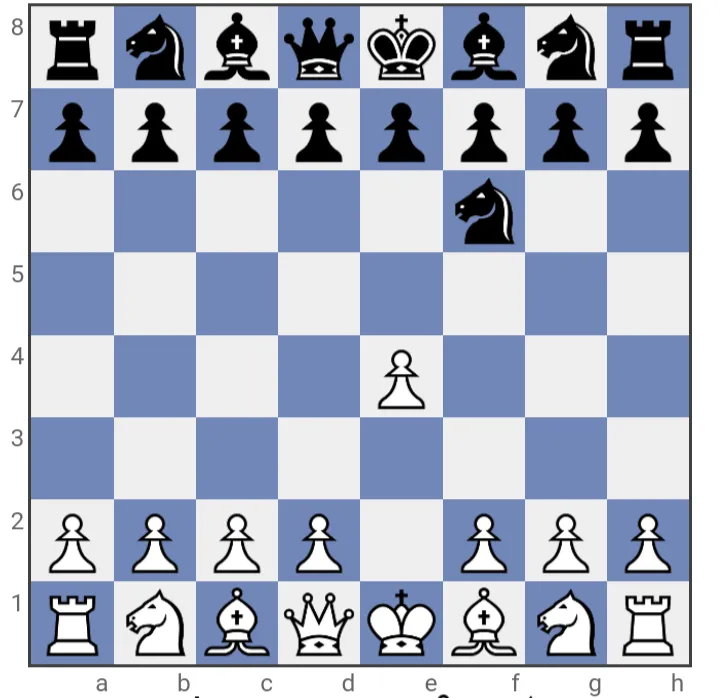
1…Nf6 is a cautious move, but it falls into the trap of allowing White to take control of the center with 2. e5, gaining a strong pawn presence. Black’s Knight is also pinned to the King, making castling difficult.
5. Pawn Push Misstep
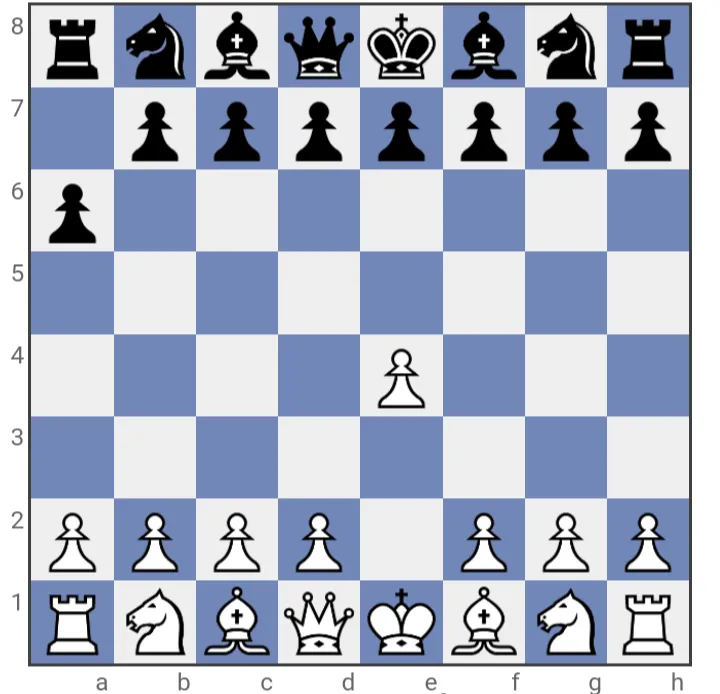
1…a6, known as the St. George Defense, is a passive choice that does little to challenge White’s central control. White can easily respond with 2. d4, further reinforcing their position and preparing for swift development.
6. Uncoordinated Knights
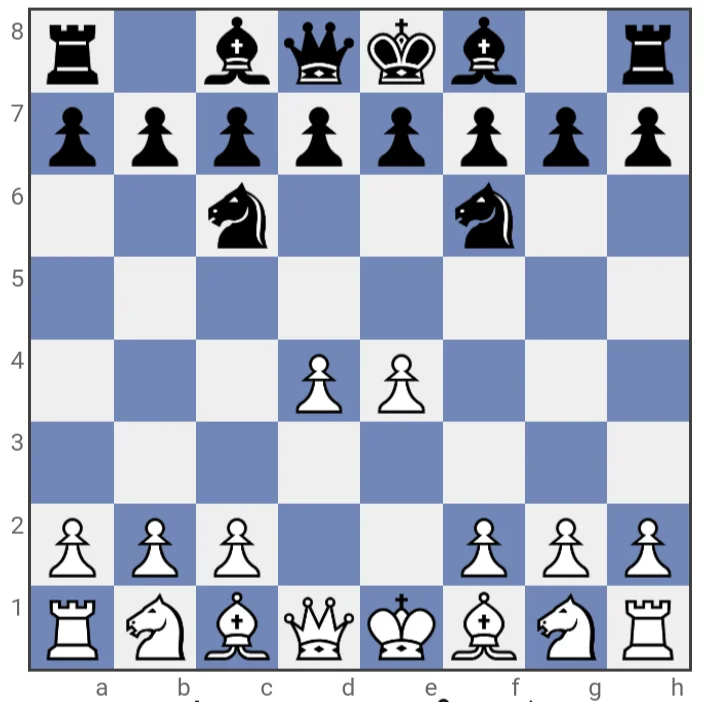
Playing both Knights out early starting with 1…Nc6 followed by 2…Nf6 can lead to a lack of coordination in Black’s pieces. White can gain central influence with 2. d4, and Black may struggle to harmonize their pieces.
7. Queen’s Pawn Neglect
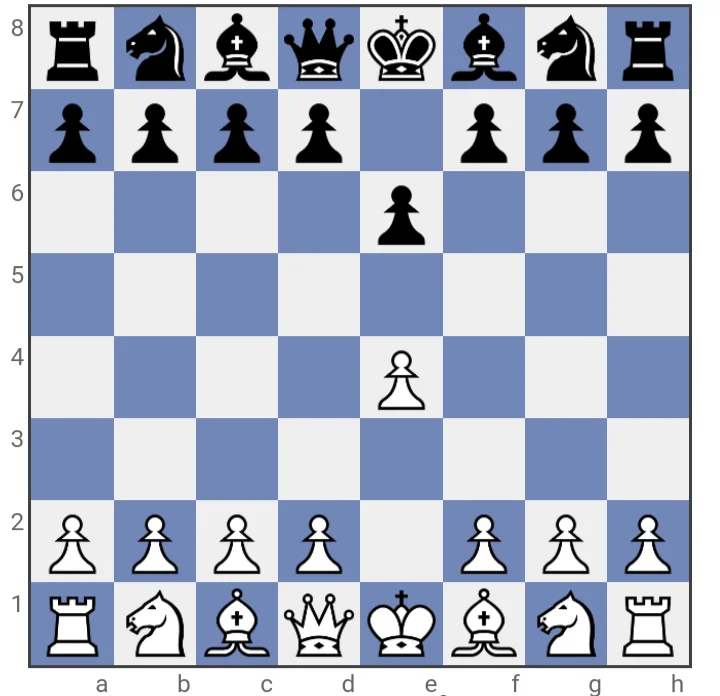
1…e6 may appear safe, but it neglects the central d5 square. White can capitalize on this by playing 2. d4, leading to a favorable central pawn structure and increased piece mobility.
8. Pawn Weaknesses
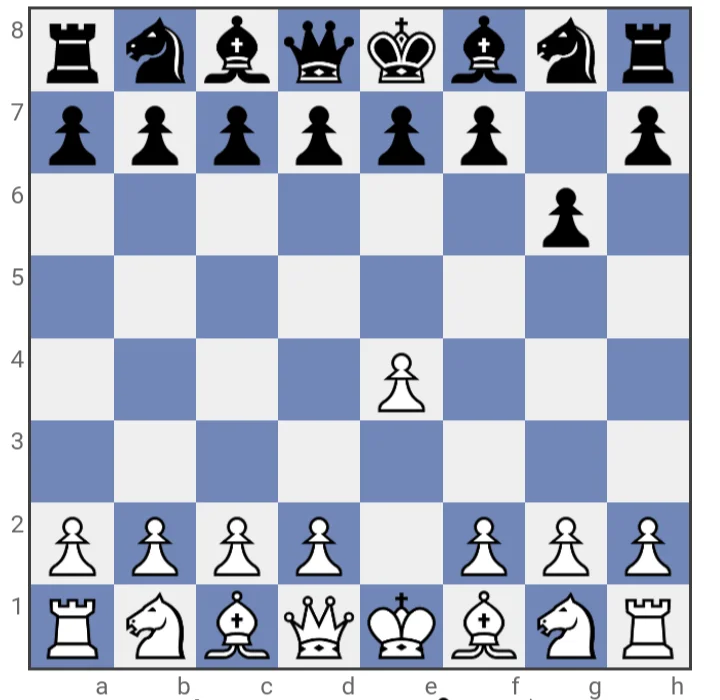
1…g6, the fianchetto setup, can weaken the dark squares around Black’s King. White can exploit this with moves like 2. Nf3, followed by 3. Bg5, putting pressure on the weakened squares.
9. The “Hedgehog” Formation
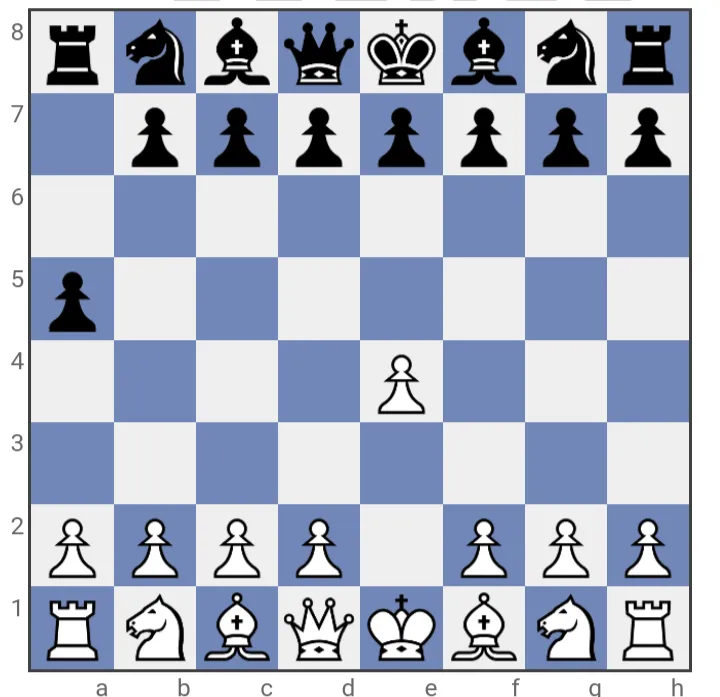
Choosing 1…a5 can lead to what’s known as the “Hedgehog” formation. While it can be a strong defensive setup, it lacks the flexibility to respond to White’s central expansion effectively.
10. The Passive Bishop
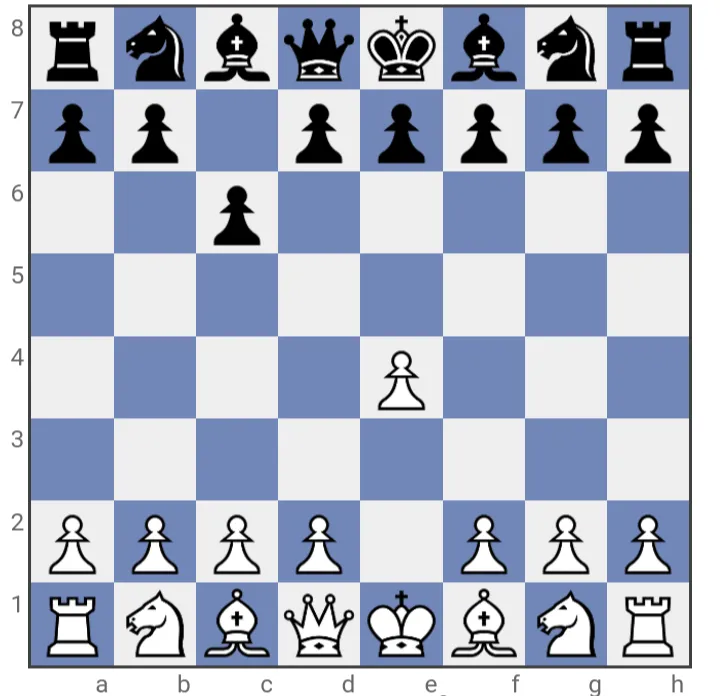
1…c6, while a solid move to support the d5 square, can lead to passive positions. White can press their advantage with 2. d4, gaining central control and potentially cramping Black’s position.
Conclusion
Chess is a timeless battle of wits, where every move is a choice laden with consequences. As Black, making informed decisions during these crucial early stages is vital. This article has illuminated the common pitfalls to avoid, helping you steer clear of mistakes that can weaken your position. We hope that our lesson will help you as a chess enthusiast refine your opening strategies, laying the groundwork for a more cohesive middle game. Happy playing!

